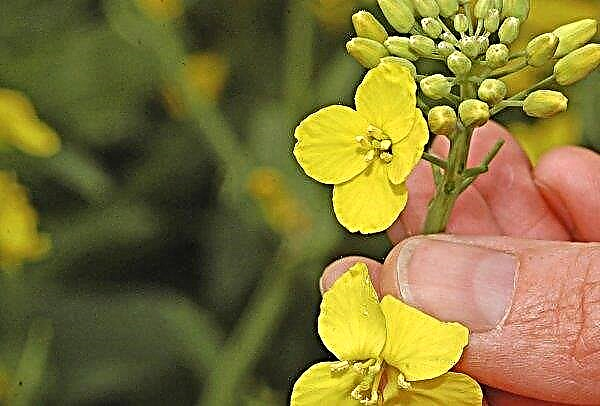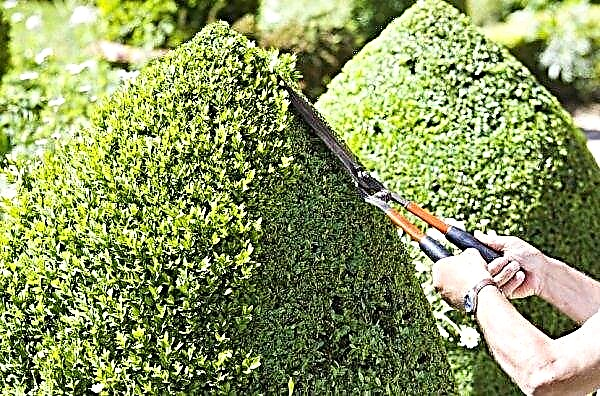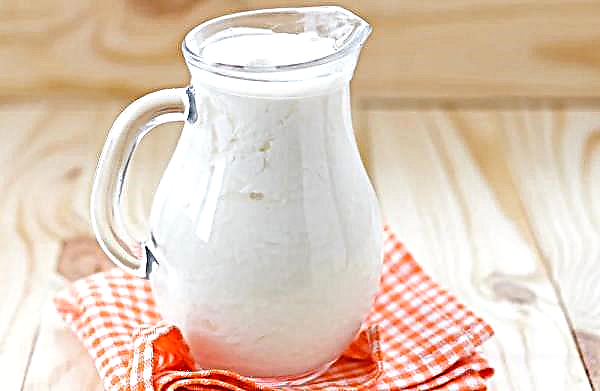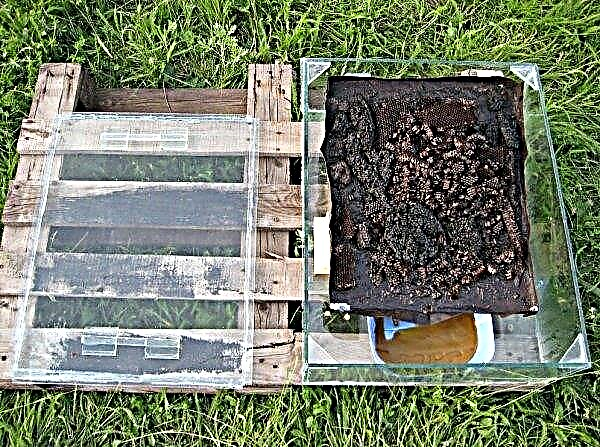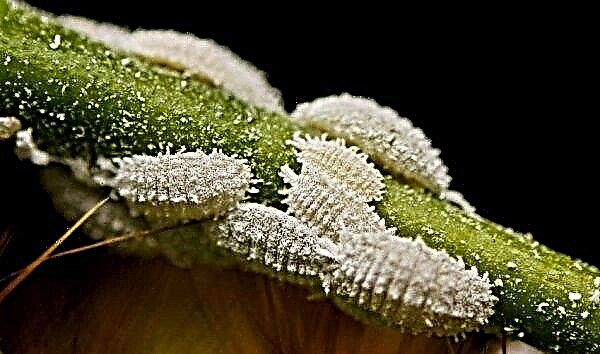When a flower chosen for home growing, not only for its bright beauty, but also for almost year-round flowering, does not want to bloom at all, this causes both annoyance and bewilderment. About why the Phalaenopsis orchid does not bloom, and how to solve this problem will be discussed in the article.
Phalaenopsis flowering period
It must be at least 2 years after planting before this orchid blooms. The first six months of its existence, the plant actively develops the root system, then comes the turn of building green mass and developing aerial roots.
As the leaves grow, flower buds are laid in their sinuses, from which peduncles will then develop. It follows that the more successful the period of laying flower buds passes, the more flowering will be. And this largely depends on the composition of the soil, which will be described below. A feature of the orchid is its tropical origin and growth in natural conditions under the cover of dense vegetation of the jungle. That is why this plant is insensitive to changing seasons and undemanding to daylight hours. When creating a phalaenopsis orchid under optimal growing conditions, it is able to bloom at home without interruption for up to 11 months a year.
A feature of the orchid is its tropical origin and growth in natural conditions under the cover of dense vegetation of the jungle. That is why this plant is insensitive to changing seasons and undemanding to daylight hours. When creating a phalaenopsis orchid under optimal growing conditions, it is able to bloom at home without interruption for up to 11 months a year.
Did you know? The variety of shapes and colors of orchid flowers can sweeten the eyes of any person, which can not be said about olfactory sensations. Some species of orchids exude truly nasty smells.
Why phalaenopsis does not bloom at home
The answer here is obvious: it means that the optimal growing conditions were not created for the orchid. And the reasons for this may be various factors.
Exposure to external factors
Lighting, ambient temperature, its humidity - all this directly affects the comfort of the plant. Accustomed to the scattered light under the cover of a rainforest, the orchid does not tolerate direct sunlight, which drains its aerial roots.
However, this does not mean that she does not need good lighting. Although it is under diffuse, but rather prolonged exposure to light in the jungle, the flower requires at least 8 hours of daylight hours at home, and for active flowering it can be extended even up to 14-16 hours. If it is shorter, then the green mass of the orchid will grow wildly, but the flowers can not wait. Being a heat-loving plant, the Phalaenopsis orchid feels best in the temperature range +25 ... + 30 ° С, and in winter - +20 ... + 25 ° С. But the successful laying of flower buds is affected not so much by the stably high ambient temperature, but by its differences between day and night. These differences should be a difference of 5-6 degrees and be provided without fail.
Being a heat-loving plant, the Phalaenopsis orchid feels best in the temperature range +25 ... + 30 ° С, and in winter - +20 ... + 25 ° С. But the successful laying of flower buds is affected not so much by the stably high ambient temperature, but by its differences between day and night. These differences should be a difference of 5-6 degrees and be provided without fail.
Otherwise, flower buds may simply not be tied in the axils of the leaves. Soil moisture also directly affects the ability of the plant to bloom safely. Excessive watering during the period of orchid budding, as a rule, leads to the cessation of flowering, as well as a lack of moisture in the soil during the flowering period.
Important! After transplanting, phalaenopsis can not be fed with fertilizers for 3–4 weeks.
Wrong landing
The root system of the phalaenopsis consists of underground and aerial roots, so planting or replanting a flower is often associated with the danger of immersion of aerial roots under the soil layer, which in no case can be done. In addition, during transplantation, underground roots that have undergone rotting or drying out are cut off, which causes the plant to stress from which it leaves for at least six months. It is clear that during this period the orchid is not able to bloom.
If during plant transplanting, a lot of air and underground roots are cut off, then in the loose soil that the orchid prefers, it simply does not hold well. Thus, it is necessary to prune flower stalks to give stability to the entire bush, which also interrupts flowering.
Incorrect fertilizer application
This orchid is very responsive to top dressing and requires their application at least every decade. However, there is an extremely important feature. If nitrogen prevails in fertilizers, such as organic ones, then this leads to violent development of leaf mass and significantly inhibits the laying of future peduncles.
This happens because the formation of flower buds, from which peduncles develop, requires not nitrogen, but minerals in the form of potassium, magnesium and phosphorus.
In addition, in the process of fertilizing the flower with fertilizers, it is necessary to adhere to the following rules:
- do not fertilize under the orchid during its short-term dormancy;
- No need to feed the plant if it is weak or sick;
- Do not apply root dressing during flowering;
- using foliar top dressing, you must be careful not to get fertilizers on the buds and flowers.

Diseases and pests
In addition to the fact that non-compliance with orchid growing conditions leads to problems with flowering, this also provokes the appearance of diseases on it and the invasion of pests on a weakened plant, which further exacerbates problems with the flowering of the plant.
First of all, yellowing leaves testify to its dysfunction, the appearance of which is caused by improper temperature conditions, lack of lighting, lack or excess of moisture in the soil.
Did you know? Of all the orchids growing on our planet, to date, experts and amateurs have bred more than a quarter of a million varieties of these plants that did not exist previously in nature.
These non-infectious causes of the problems open a direct path to the onset of infections in the form of:
- powdery mildew, characterized by the appearance on the leaves and buds of white plaque;

- brown rot leaving watery brown spots on young shoots and leaves;

- spotting covering foliage with circular, striped or mosaic spots;
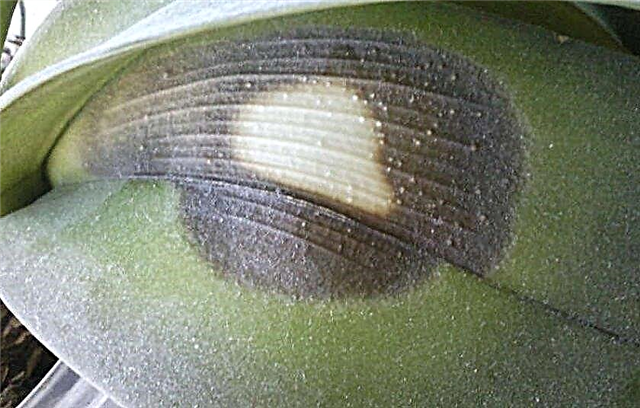
- gray rot creating a fluffy coating of gray color on the leaves and processes and covering the flowers with small spots;
- root rot causing the root system to soften and rot, and the leaves to acquire a brown color;
- rust covering the bottom of the leaves with a red coating;
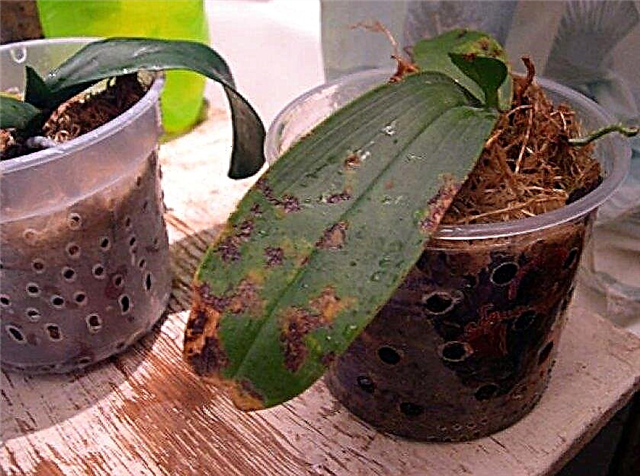
- Anthracnose forming on the foliage growing black spots;

- Fusarium rot depriving turgor leaves and forming a pink coating on them.
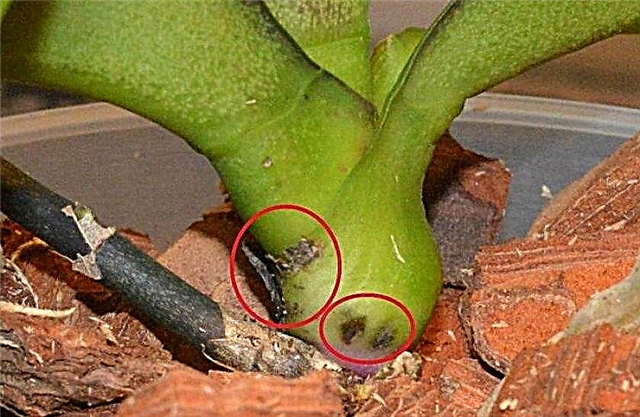
In addition to diseases, pests represented by:
- smoldering covering the flowers, shoots and the back of the leaves with a sticky consistency, because of which they lose their original shape;
- shields, hiding on leaves under the growths they create;
- whiteflies which are small insects of white color, leading to yellowing of the leaves and their subsequent decay;
- thrips forming a silver film on all fragments of the bush;
- mealybug, forming a cotton-like coating on the plant;
- ticks entangling the bush with a thin cobweb and causing the leaves to curl and dry.
Important! With a depleted root system and loss of turgor leaves, it is impossible to arrange an orchid to simulate a drought or rainy season, since this can lead to the death of the plant.
What to do and how to make the Phalaenopsis orchid bloom
Florists have accumulated rich experience in stimulating flowering in orchids.
To do this, they use such techniques:
- Spray the bush with a growth stimulator. If Epin is used for this, then in the amount of 5 drops it is diluted in 200 g of water and the plant is sprayed with the resulting solution daily in the morning.
- The second technique is less gentle in relation to the plant, but makes its genetic memory invigorate, which stores memories of the dry periods that occur in natural conditions. For this, the house is created artificial drought which consists in a temporary cessation of watering.
- There is also a diametrically opposite imitation, which resembles an orchid about the rainy seasons that regularly occur in natural conditions. To do this, the pot with the plant is immersed in water at a temperature of + 35 ° C for 4 days. After these procedures, there follows a half-month “drought period” with a complete cessation of irrigation and its subsequent restoration in normal mode.
- You can induce phalaenopsis to bloom by treating the bush with warm water using a spray. A positive effect is possible only by spraying three times during the day until the beginning of flowering.
- It stimulates the flowering of the orchid and the stress it receives during a sharp temperature drop and the interval between + 18 ° C and + 25 ° C. To do this, the flower pot is taken out to a cooler place for the night, and in the morning it returns to its usual warm place until a new peduncle appears on the bush. It should be remembered that a temperature below + 18 ° C is already dangerous for the orchid.
- Oddly enough, but flowering also stimulates pruning. This is due to the presence of sleeping flower buds in the axils of the leaves, which, when cutting the peduncle, wake up and throw out new peduncles. For this, the peduncle is cut 2-3 cm higher than the flower buds so that they do not dry out.
- There is a more severe method, which implies for the flower a sharp change in the usual environment to a wetter and darker one. For this, a place under the kitchen sink is quite suitable. After staying in such conditions for a month and returning to a permanent place at the same time as watering, the orchid not only throws out new flower stalks, but also often forms “children” that can become new orchids.

Preventative measures
Since problems with the state of the plant are easier to prevent than to be eliminated later, it is useful to remember what you should not do to avoid these problems:
- Waterlogging of the soil and the appearance of drops of water on the foliage should not be allowed, leading to rotting and the appearance of fungal diseases.
- Do not water orchids at night, since this leads to their hypothermia and provokes the occurrence of fungal infections.
- Do not water the orchids with tap water, since the salts in its composition are deposited on the root processes and prevent them from absorbing moisture normally with nutrients. In extreme cases, you can occasionally use well-defended tap water.
- It is not recommended to abuse fertilizers and experiment with their proportions. It is best to use top dressing specifically designed for orchids, scrupulously following the instructions.
- You should not immediately place newly acquired plants next to long-growing houses, to avoid infection without an appropriate quarantine period.
- The faded peduncle should not be removed before it dries. because over time (after 2-3 months) an unripe flower stalk can bloom again and even form “babies”.
- In no case should you hold phalaenopsis under burning sunshine, which not only can burn the leaves, but also are able to dry aerial roots.
Important! In order for this orchid to present in all its glory for almost a year, you can not do without artificial lighting in the winter.
Features of plant care
The most important component of orchid care is its competent watering. As already mentioned, it is extremely undesirable to use tap water for this, especially unstated.
This plant requires soft water in the form of:
- rain;
- thawed;
- filtered.
Several methods of watering the orchid are used:
- During the spill, water flows along the edges of the tank, after which it flows through the drainage holes into the sump. This method is recommended after a plant transplant.
- A container with an orchid is immersed in water for 10 minutes, as a result of which water penetrates the soil through the top and through the drainage holes.
- During a partial dive, the phalaenopsis pot is placed in a pan with water for a quarter, or even half a day. Through the drainage holes, the root system actively draws water, and in parallel, the soil in the pot is partially moistened.
- In order to arrange a warm shower for an orchid, it is placed in a bath and watered from the shower with water heated to + 40 ° С. But after this procedure, which is very useful to phalaenopsis, it can not be immediately moved to a cooler room. It is also strongly recommended that you wipe the deciduous sinuses with a tissue.
Video: orchid watering methods
No less moisture on the normal growth of this plant affects the optimal light regime. The desired daylight hours for this orchid are between 8 and 16 hours. In this case, the following trend is observed: the shorter this day, the stronger the green mass grows to the detriment of flowering, and the longer it is, the more magnificent the bush blooms.
Since phalaenopsis prefers moist air, in winter, when central heating or any other continuous heating dries the air in the house, the plant is able to get rid of flowers, the buds on it will dry out, the leaves will lose turgor, and the aerial roots will dry out. During this period, it is imperative to humidify the air with humidifiers.
It is useful to spray bushes from fine sprayers, as well as to place wide containers with water near flower pots or to place wet towels near them. Fertilizing with fertilizers plays a significant role in plentiful and long flowering, as mentioned above.
It should be clarified that the best option can be special preparations designed specifically for orchids ("Dr. Foley", "Mr. Color").
If a plant capable of continuously and luxuriantly blooming almost all year round blooms sluggishly, for a short time or does not bloom at all, then it is entirely up to the person to blame. Meanwhile, if you make some efforts and observe elementary conditions, you can achieve excellent flowering from the Phalaenopsis orchid, pleasing to the eye at any time of the year.







